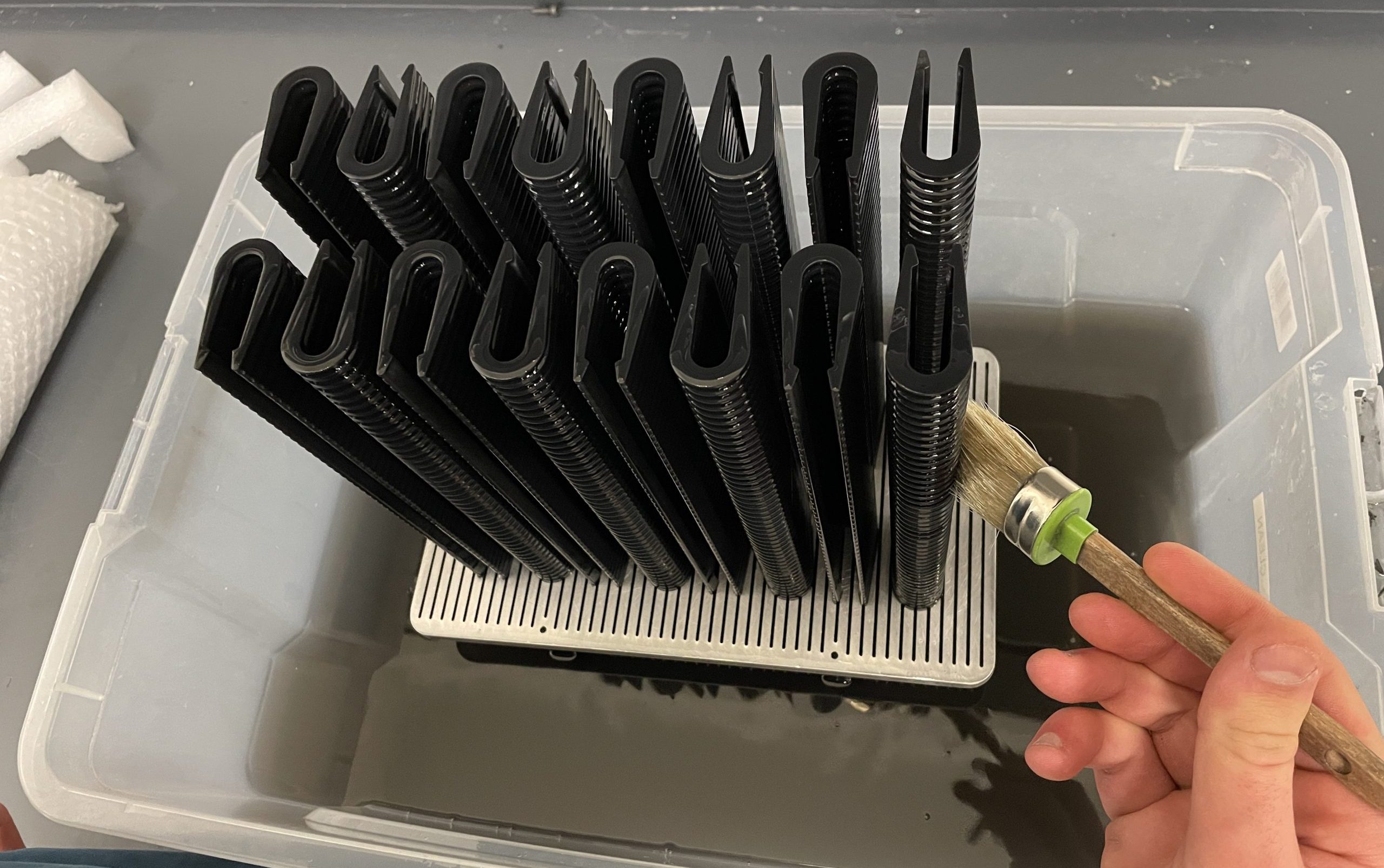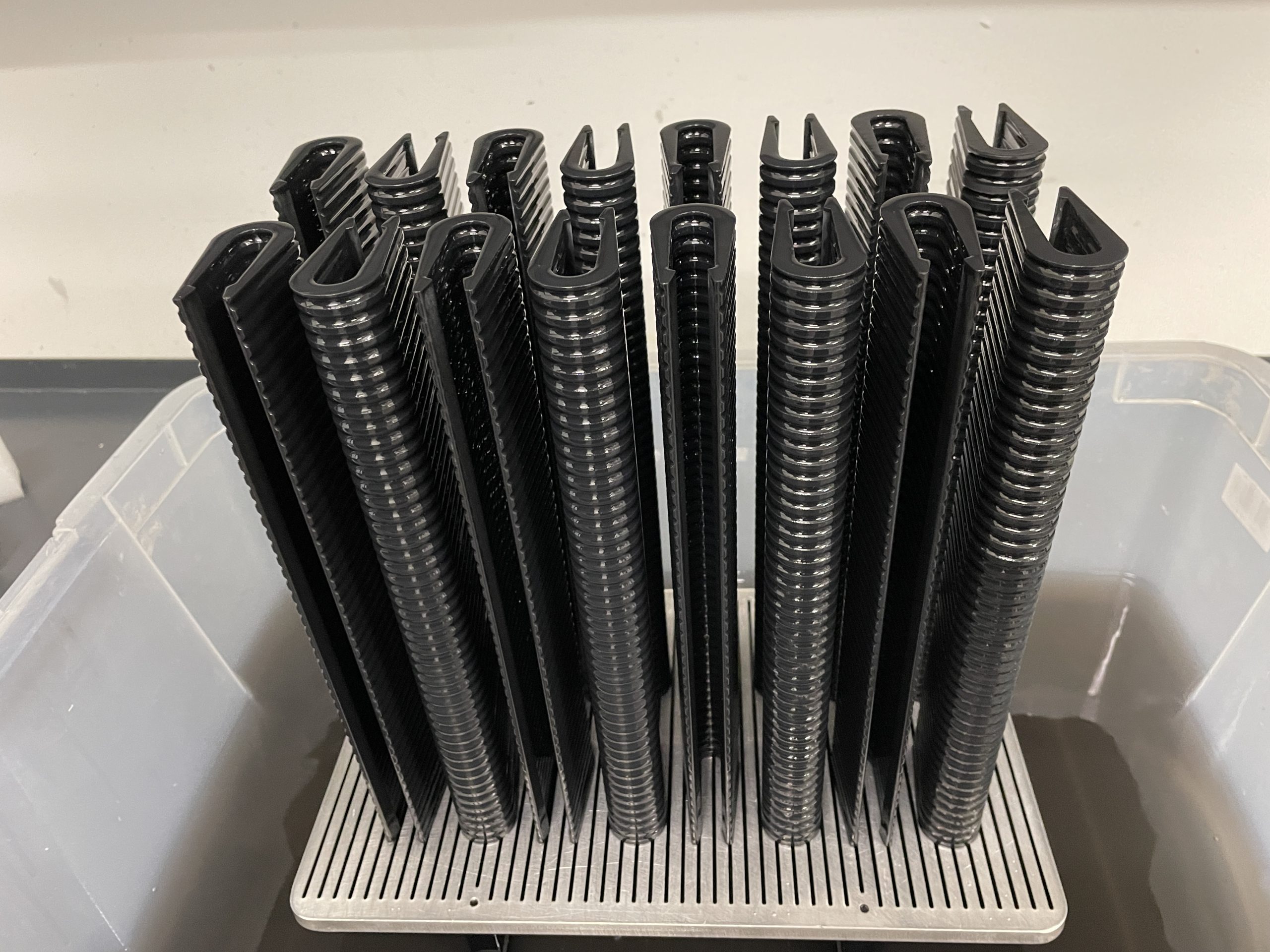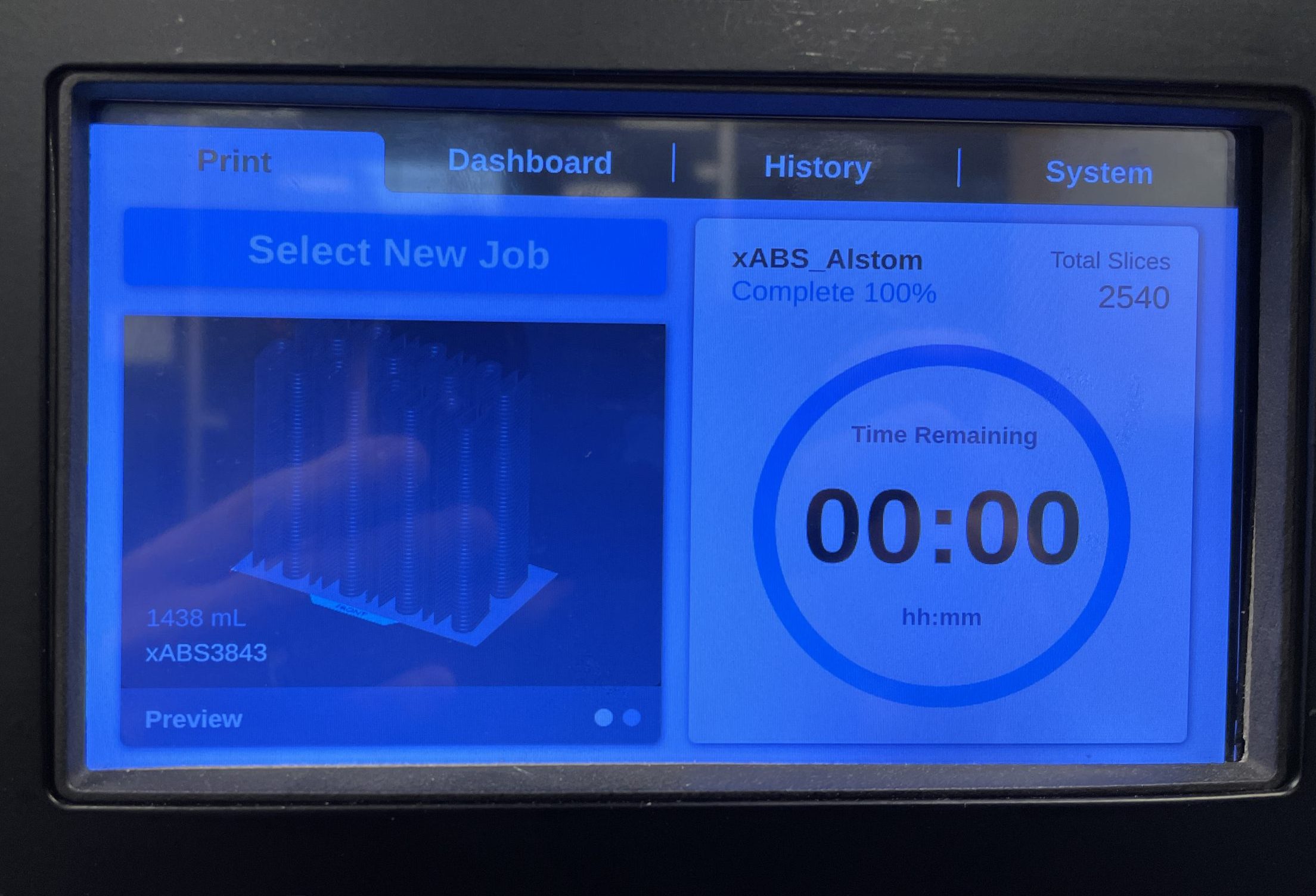3DZ supports high-speed Alstom trains with ultrafast 3D printing
3D printed footrests to extend the lifecycle of Alstom's rail cars, resulting in 75% cost savings and a lead time reduction of 172 days.
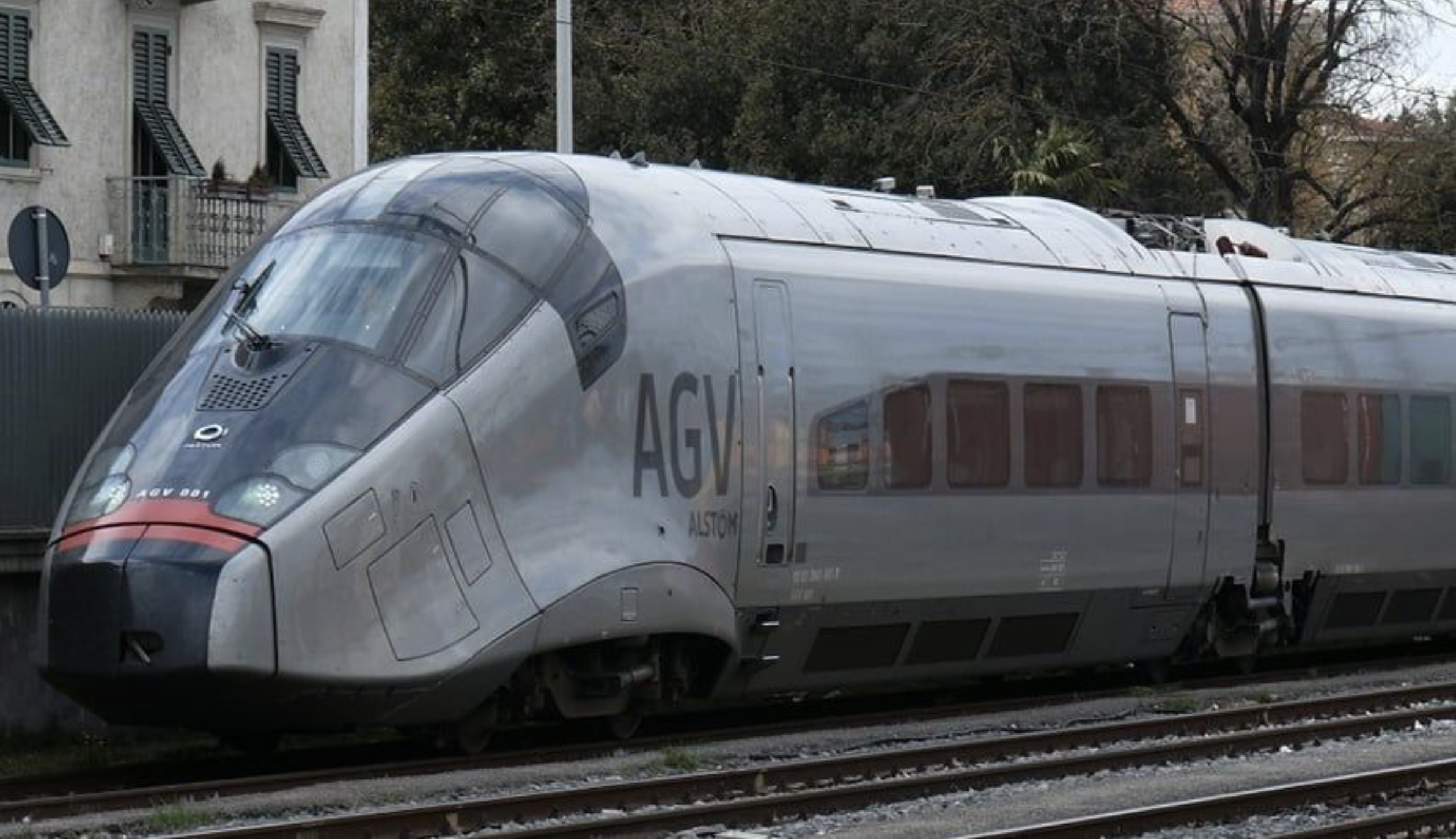
The company
Alstom is one of the largest railway companies in the world. The high-speed trains it produces can be found in all major rail markets on 6 continents and in more than 60 countries around the world.
3D printing landed at Alstom in 2019 as part of an innovation project, but over the past two years, making parts with additive manufacturing is proving to be a frequent production option. Lorenzo Gasparoni, the responsable of the management of the schematics and electrical equipment of the trains, coordinates the 3D printing and scanning projects.
Ensuring assistance to obsolete rail cars worldwide
While Alstom produces advanced, next-generation high-speed engines and rail cars, it also services a large base of existing customers, with fleets that can be more than 30 years old. As the rail fleet ages, there are numerous components that need to be serviced or replaced to extend the life of a rail vehicle.
“After 30 years it may be that the original suppliers of the product no longer exist, or that the molds used to produce the parts have been destroyed, because after 30 years it is a cost even to maintain a mold“, Gasparoni says.
Thus, it can be said that in these cases, finding or producing replacement parts is a real challenge.
In mid-2022, Gasparoni’s team was tasked with producing 200 footrests for the ETR575 that needed to be replaced because they were worn or damaged. These footrests are items that are subjected to heavy use and whose surface is visible to passengers. Since these are relatively low volumes, Alstom decided to use 3D printing as an alternative to machining a new mold and injection molding.
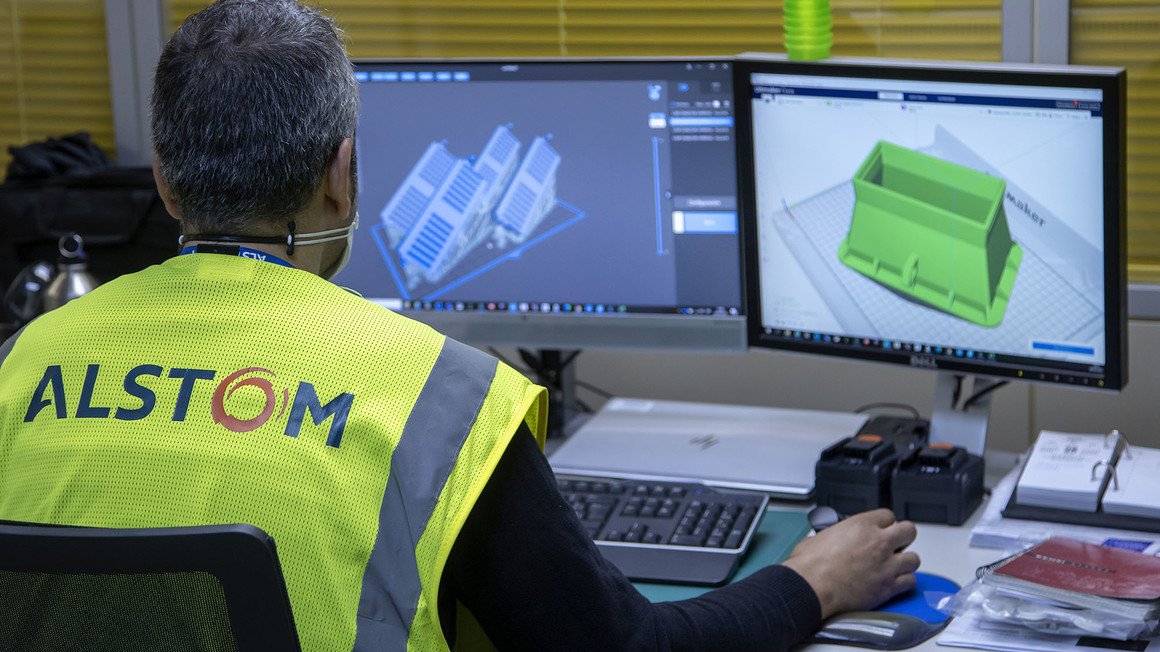
Practical help in the testing and selection phase
In the summer of 2022, Lorenzo’s team turned to 3DZ for advice on the 3D printer that could meet the requirements needed to produce these end-use parts. 3DZ is a reseller of the best brands of 3D printers and scanners and accompanies companies in choosing the most suitable technology for their specific application.
Lorenzo Gasparoni recounts, “In 3DZ’s large showroom, we were able to get hands-on with various printing technologies and see them in action. We worked closely with the 3DZ Application Engineer team to find the right technology and printing material for us: several tests were performed, using different 3D printers and resins, to compare and verify aesthetic quality and strength of the final part.
At this stage it was an added value to be followed by a dedicated person who had in-depth, practical knowledge and experience with the machines.
We initially considered other technologies, including several resin options, but in the end, after reviewing the molded parts and materials, we chose Nexa3D, which turned out to be the most suitable option for our needs.”
Davide Piran, Application Engineer at 3DZ adds, “We did a thorough analysis of the characteristics of the parts Alstom needed to print. Because of the size, the mechanical properties required of the finished parts, and the short production timeframes, NXE400 Pro was the choice.”

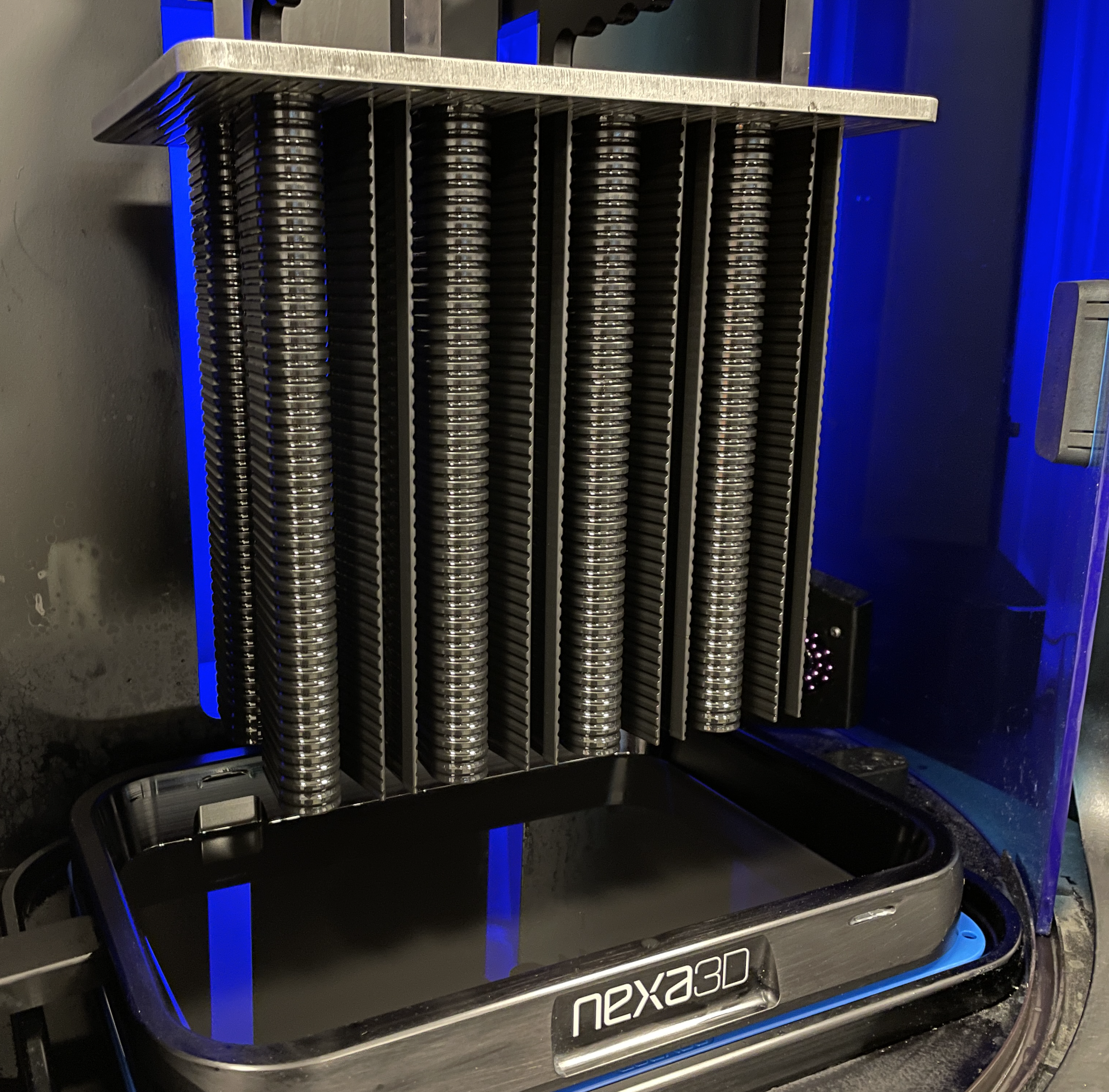
And so, in September 2022, Lorenzo Gasparoni’s team added Nexa3D’s NXE 400Pro ultrafast 3D printer to its fleet.
The key elements that were instrumental in choosing this printer were:
- the large volume of construction
- the high speed
- the single-component resins
- the open platform
3DZ technicians installed the machine and trained Alstom’s attendant personnel so that they could immediately take full advantage of the NXE 400Pro’s potential.
3D printing of 30 platforms in 10 hours
After installing their new ultrafast 3D printer, the Alstom team went to work printing footrests.
The NXE 400Pro takes only 10 hours to produce 30 footrests. By orienting the part vertically, the capacity of the printing plate was optimized, increasing productivity.
The xABS3843 resin, manufactured by Henkel Loctite, is an excellent replacement for Lexan, the material in which the original footrests were printed. XABS3843 proves to be stable and durable over time, and the print quality is so good that there is no need to sand, primer or paint the resulting part before using it on train cars. This contributes to an important reduction in lead time.
In addition, Lorenzo points out that 3D printed parts provide significant cost savings: “The minimum quantity that can be ordered for injection molding is over 500 pieces, and at that volume the cost is about 200 euros per part. With NXE 400Pro there is no minimum quantity and the cost is 50 euros per part, so it is much more affordable.”
To date, the Alstom team has produced more than 100 replacement platforms that have been installed in rail cars. After a successful example like the footrests, there are all the prerequisites to increase the use of 3D printers like the NXE 400Pro to make other replacement parts and more.
The decision to purchase an ultrafast 3D printer has improved Alstom’s ability to respond to urgent customer needs: “For our customers, stopping a train to wait for spare parts is not economical, so we need to be able to provide them with a quick solution.”
3DZ, an experienced partner
This project was completed with excellent results by selecting the most suitable technology, tools and materials. 3DZ is a reseller with more than a decade of experience on everything related to 3D technologies and accompanies companies in making the best choice for their specific needs.
Contact us: our 3D printing and scanning experts are at your disposal.



